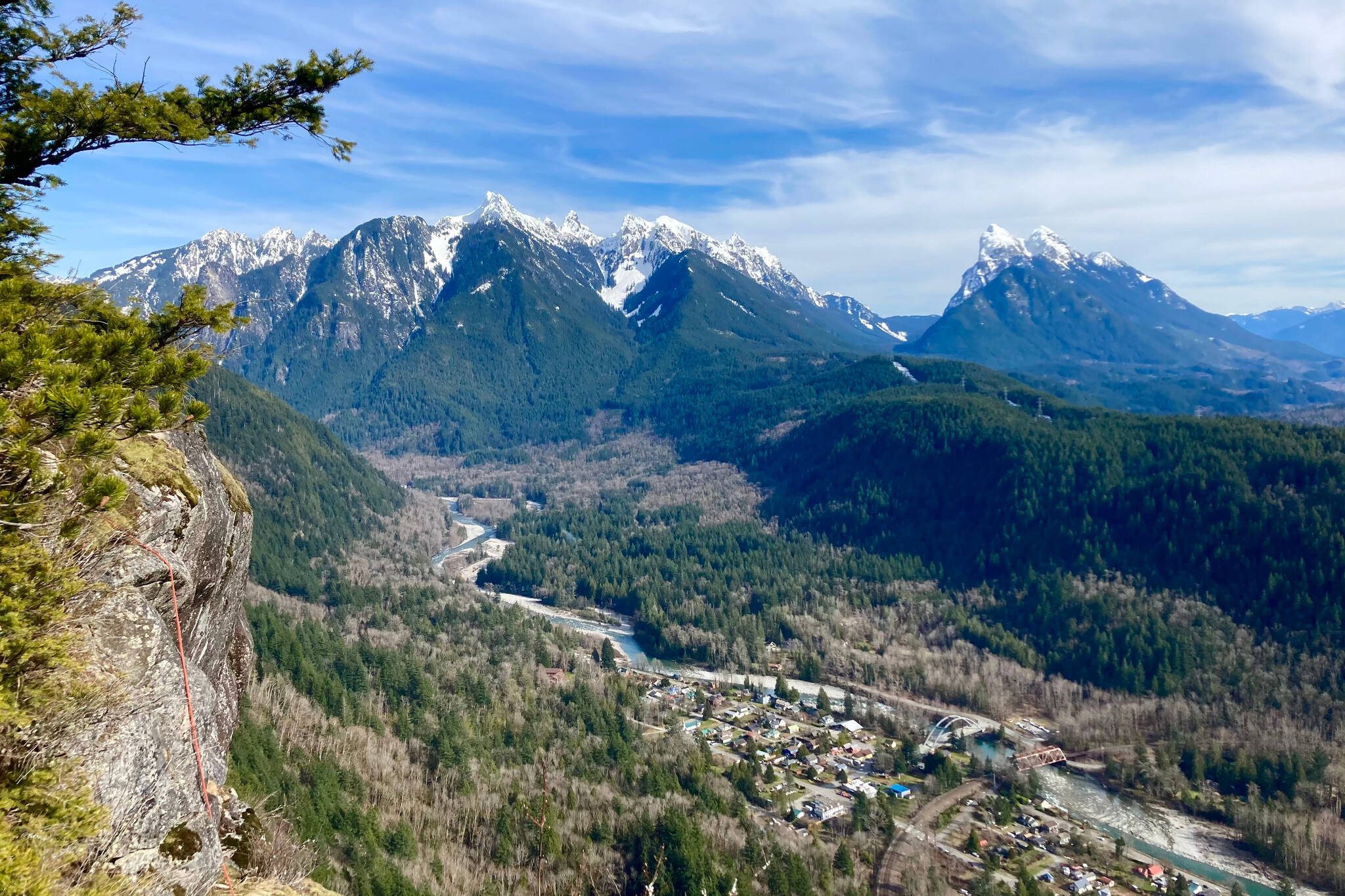By Gregory Scruggs / The Seattle Times
INDEX — Washington climbers have acquired a 20-acre parcel of granite walls in Index, helping permanently protect part of Washington’s renowned training ground for rock climbing.
On Monday, the Washington Climbers Coalition and the Access Fund, a national climbing conservation group, announced it had acquired the parcel in Snohomish County. It includes part of the Lower Lump and Inner Walls areas and was purchased from a private landowner who for years had given climbers implicit permission to use the area.
These hunks of rock along U.S. 2 in the Cascade foothills are home to some 30 routes, including many of the more moderate climbs in the notoriously challenging destination. They will now remain climber-friendly in perpetuity as the new owners intend to donate the land to the state for inclusion in Forks of the Sky State Park.
This outcome would repeat the groups’ successful acquisition and donation of Index’s Lower Town Wall in 2010, avoiding a potential quarry. It was later christened the Stimson Bullitt Climbing Reserve after the noted Seattle broadcasting executive who climbed Index rock walls into his 80s.
Washington State Parks did not comment on the potential land donation by press time.
“Index closely approximates what you would find on some of the biggest mountains in the world,” said Washington Climbers Coalition communications director Chris Kalman, author of “The Index Town Walls: A Guide to Washington’s Finest Crag.”
“This is a really important crag not just in Washington but in the U.S.”
In the 1950s, legendary Seattle-raised climber Fred Beckey pioneered the first routes at Index, which served as a training ground for world-renowned alpinists like Greg Child and Steve Swenson. Some of the first successful ascents of Yosemite National Park’s El Capitan without the aid of hammers and pitons, which climbers use to create temporary anchors for their ropes, were completed by Washington climbers who trained at Index.
Today, Index is arguably Washington’s most popular crag, or climbing area. At 55 miles from Seattle, it serves as the local spot for countless climbers. But the barrier to entry for climbers can be as steep as the walls.
“Index has a well-earned reputation for really hard climbing,” said Kalman. “It is not a beginner’s climbing area.”
That reputation may change as some of the routes on Lower Lump and Inner Walls become better known.
They include an area called Field of Dreams, which contains more than a dozen climbs with intermediate-to-advanced difficulty ratings between 5.7 and 5.10+ on the Yosemite Decimal System for grading climbs (the grading system ranges from 5.1 to 5.15). These routes are fully bolted, meaning there are permanent anchors on the rock for climbers to clip their ropes, a style known as sport climbing.
The parcel also includes Toxic Shock, a 5.8 to 5.9 difficulty route without bolts where climbers practice the traditional or “trad” style, which means placing and removing their protective equipment as they climb. Toxic Shock is a 30-meter-long crack climb, in which climbers follow a crack in the rock rather than using protruding hand and foot holds.
“If you have gym climbers in Seattle who want to learn to sport climb, Index is poised to be an incredible resource for transition because of this area,” Kalman said.
The prior landowner had allowed climbers here, aided by a Washington state law that relieves landowners of liability for injury from outdoor recreation. But the $120,000 purchase formalizes and guarantees future access. It will also facilitate safety improvements, like rerouting approach trails in the event of erosion instead of climbers needing landowner authorization to conduct such work, or doing so surreptitiously.
Public ownership is also a bulwark against possible changes of heart from private landowners. For example, in 2006, a Kentucky bed-and-breakfast owner revoked general access to the Torrent Falls climbing area in Red River Gorge, Kentucky, after climbers did not obey prohibitions on dogs and did not respect common courtesy around behavior like outdoor urination.
However, public ownership is no guarantee of land management on terms favorable to climbers. In 2013, the National Park Service issued a moratorium on the installation of fixed anchors like bolts in wilderness areas of North Cascades National Park following an incident the previous year in which the Park Service removed bolts on Forbidden Peak that were installed by a climbing guide to aid rappels.
A Seattle climber later died in a September 2013 rockfall accident while descending the mountain. Some climbers believe the fatal outcome could have been avoided if those anchors had remained in place. That year, NBC News reported that North Cascades National Park has the highest death rate of any national park over 15 years of data.
More recently, the Department of Natural Resources has limited trailhead access to reach the Equinox climbing area in Skagit County outside of Mount Vernon, where access crosses a Boy Scout camp.
In contrast, the rules at Index are governed by a management plan written by the Washington Climbers Coalition. If and when the new parcel is added to state park land, the management plan will retroactively apply. That means bolts currently on the routes can stay there, and as climbers develop routes, new ones might be added.
The coalition is currently raising $100,000 to cover the costs of the conservation loan that enabled the purchase.
A few private parcels remain in the vicinity of Index’s famed walls, but the walls themselves are now secured.
“This parcel is the final big piece of the puzzle,” said Kalman. “It would have been a significant, tremendous loss if this area was not locked down.”
Talk to us
> Give us your news tips.
> Send us a letter to the editor.
> More Herald contact information.

























